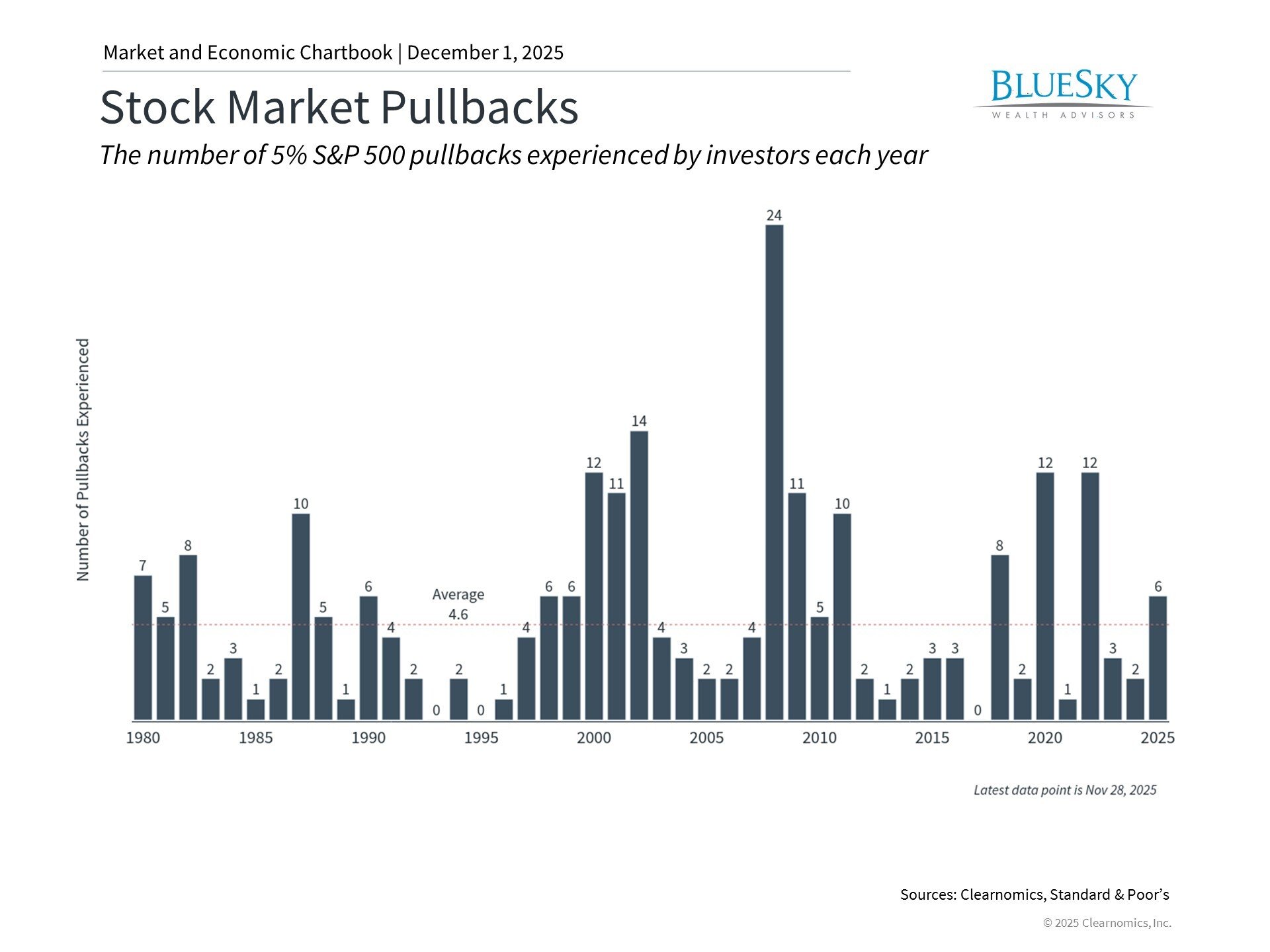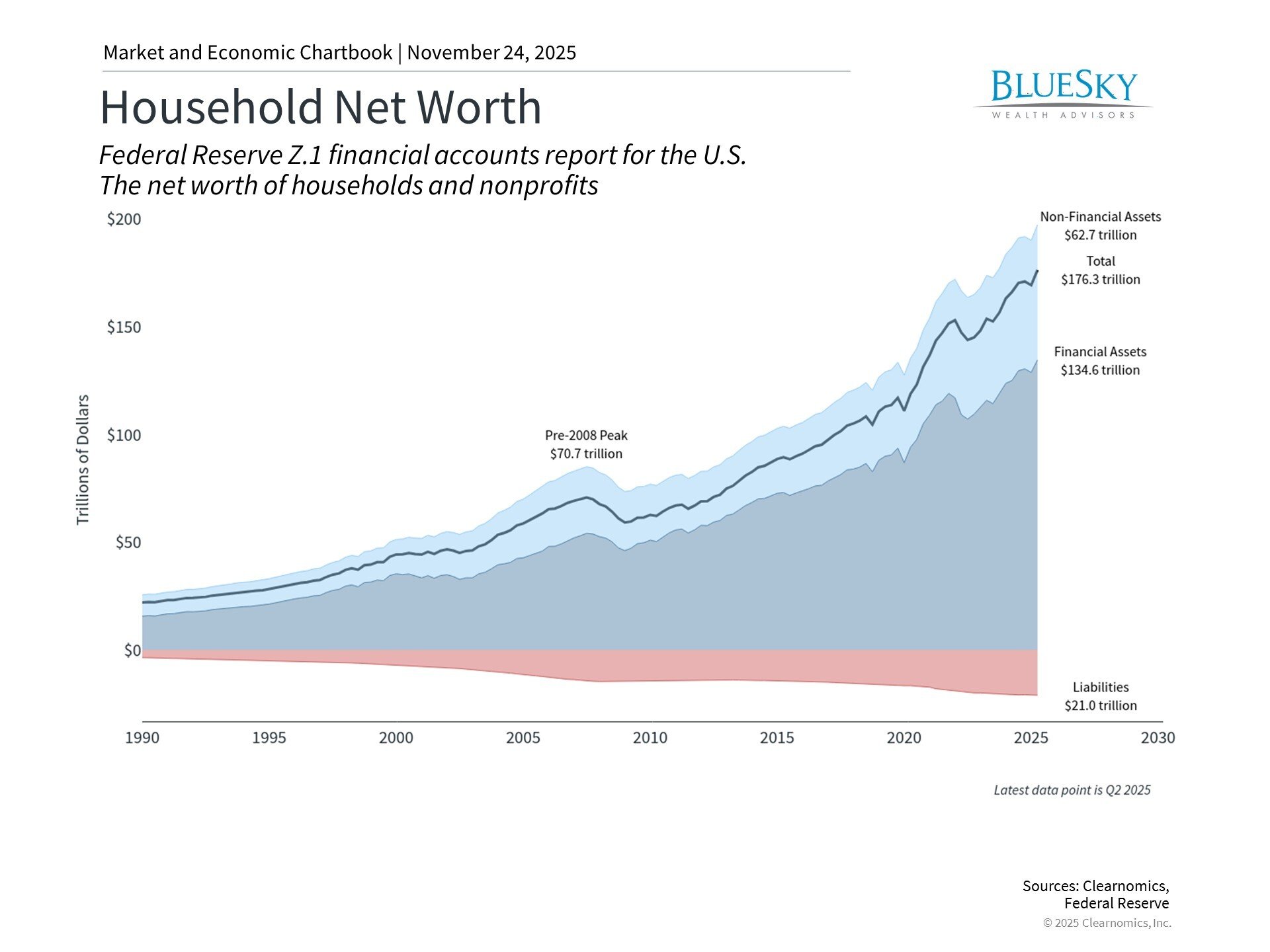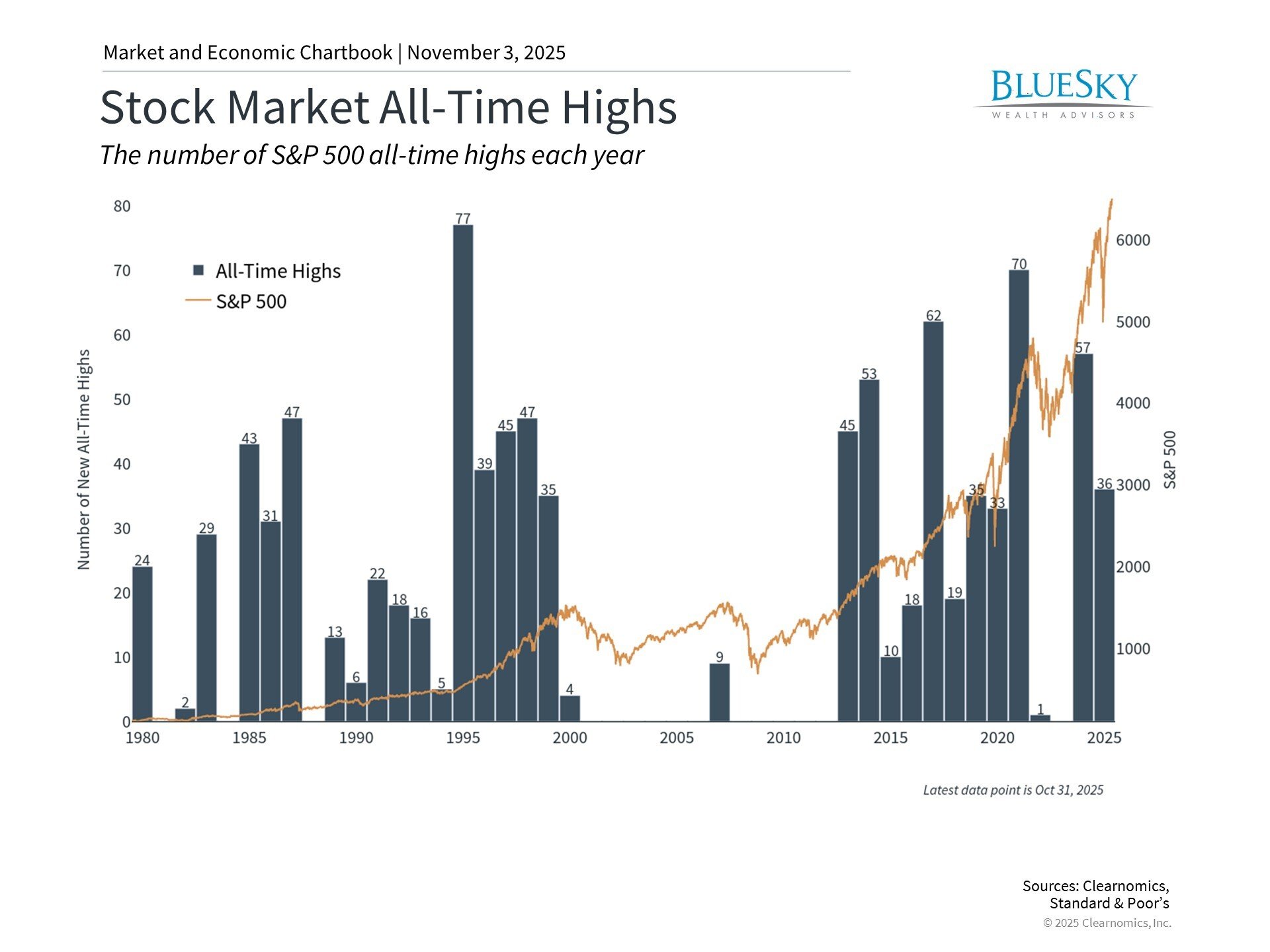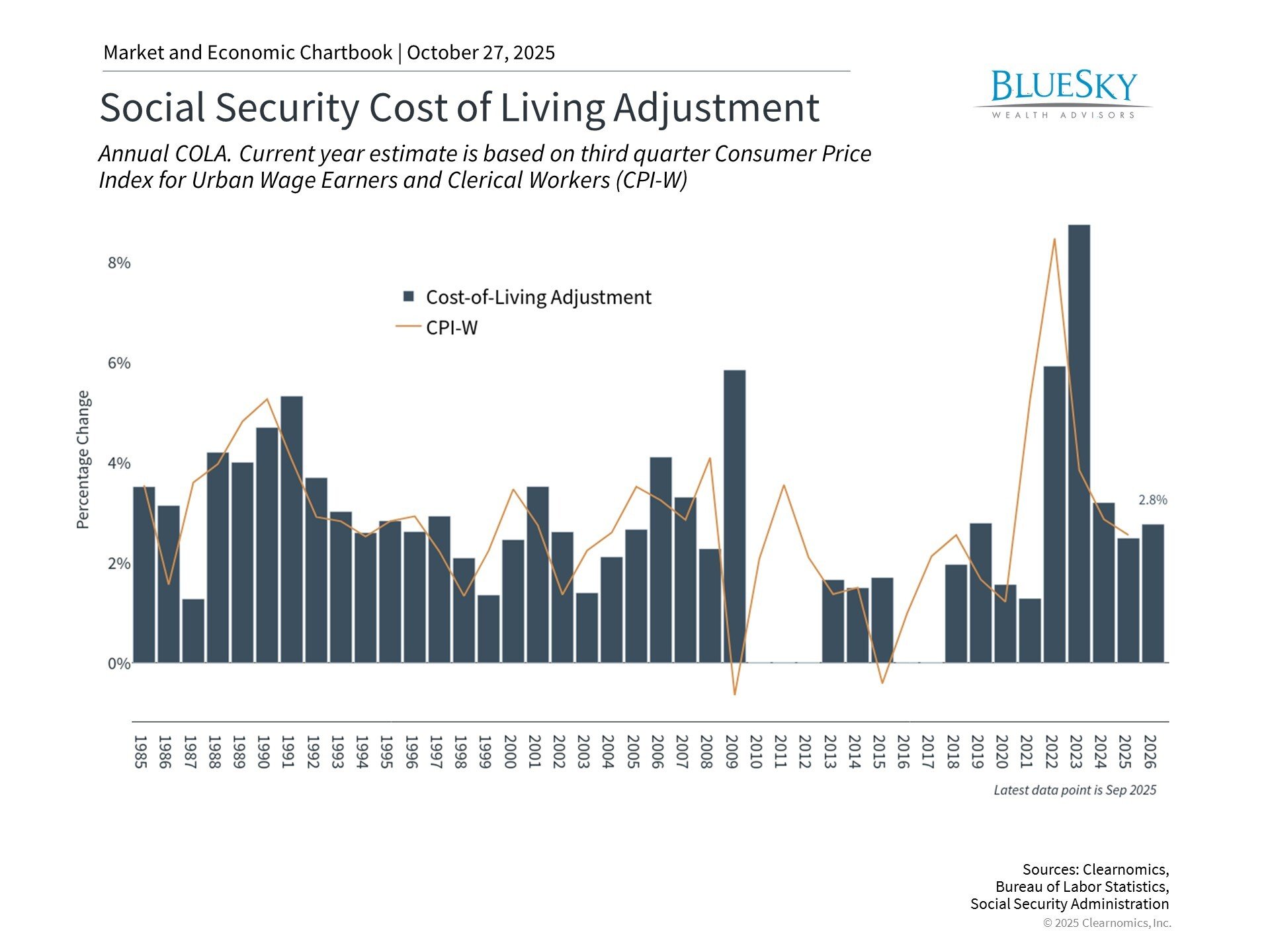
Interest Rates & Renewed Hopes for a Soft Landing
Interest Rates & Renewed Hopes for a Soft Landing

There’s a common saying among investors that markets take the stairs up and the elevator down. This is because the long-term trends that drive markets higher tend to be slow moving and compound over time, whereas the events that create short-term panic tend to be sudden and unexpected. At the same time, history shows that even new market lows tend to be higher than previous peaks. In other words, markets often take the stairs up several floors before riding the elevator down one or two levels. For long-term investors, understanding this dynamic in the current environment is critical to staying focused on important financial goals.
Bond market volatility has been elevated

A more technical way to frame this dynamic involves the distinction between returns and volatility. Returns are simply the gains that investors experience in their portfolios which, ideally, should be measured over timeframes that capture the growth in asset prices across important phases of the market and business cycle.
In contrast, volatility measures how much prices swing over days, weeks, or months. These swings often reflect the gap between reality and expectations for investors. Given that expectations can shift wildly in both directions, it should not be surprising that market prices fluctuate as much as they do. However, these fluctuations do tend to even out over time. In the end, what should matter more to investors is their final outcome and less the path it took to get there.
The past few weeks prove this point. The recent market correction only pulled the S&P 500 back to levels last reached in May before then spurring the strongest rally of the year during which the market gained 5.9%. This is because investors feared the worst when rates jumped in October before new data showed that the backdrop is more balanced than expected – one in which inflation is slowing and economic growth is steady but decelerating enough to appease Fed policymakers. Markets often need time to adjust to these dynamics which naturally causes asset prices to swing.
While investors often focus on stock market volatility, using measures such as the VIX index, the volatility of interest rates and the bond market has been far more severe since the beginning of 2022. The 10-year Treasury yield, for instance, has made multiple roundtrips within a range of 4.5% to 5% since September. The accompanying chart shows the MOVE index of bond market volatility which has been elevated for over a year and a half. Fortunately, recent economic data have led interest rates to fall once again, calming markets.
The job market is showing signs of softening

One reason for this is the recent jobs report for October which showed that hiring slowed. The economy added 150,000 new jobs over the month which is less than the 180,000 that economists had expected. This was also a sharp decline from September’s 297,000 new jobs, due in no small part to a drop in manufacturing employment due to factory strikes. Unemployment increased slightly from 3.8% to 3.9% while the labor force participation rate, which measures the percentage of the working age population either working or actively looking for work, declined slightly to 62.7%.
While these figures represent a slowdown in the job market in October, it’s important to understand how they fit into the bigger picture. First, investors should never make decisions based on only a single month’s numbers, whether it’s the jobs report, the Consumer Price Index, or GDP. Not only are these figures subject to change but they are also only estimates with wide margins of error.
Second, and more importantly, investors have been anticipating a slowdown in the labor market in response to tighter monetary policy by the Fed. The softening of an otherwise strong labor market coupled with improvements in inflation represent the Goldilocks situation investors have been hoping for.
A “soft landing” means that the Fed can pause its rate hikes and, as price pressures decline, possibly consider cutting rates over the next couple of years. Unlike in 2022 when the Fed had to raise rates rapidly, the possible end of the tightening cycle will likely create more stability and certainty for investors. In the ideal scenario, the gap between reality and expectations could shrink as the macroeconomic shocks of the past few years continue to fade.
Markets do not expect the Fed to raise rates again

Holding rates steady is precisely what the Fed did again at its November meeting. The Fed recognized that there have been important improvements to the inflation story while the overall economy has been healthier than expected. A softer labor market reduces the risk that inflation could surge unexpectedly, and unemployment is approaching the Fed’s 4% forecast for the end of the year. The Fed’s ideal situation is that interest rates remain high across the yield curve to keep the economy in check without the need for additional rate hikes.
This is not to say that market volatility is behind us – it never is, after all. On the contrary, it highlights that markets and investors often get ahead of themselves whether it’s due to inflation, the Fed, financial stability in China, Washington politics, or dozens of other factors. In all of these cases, it’s more important for investors to understand the bigger picture than try to react to every new headline.
The bottom line? Investors should maintain a long-term perspective rooted in economic and market trends. Doing so is still the best way to increase the odds of achieving financial goals.





